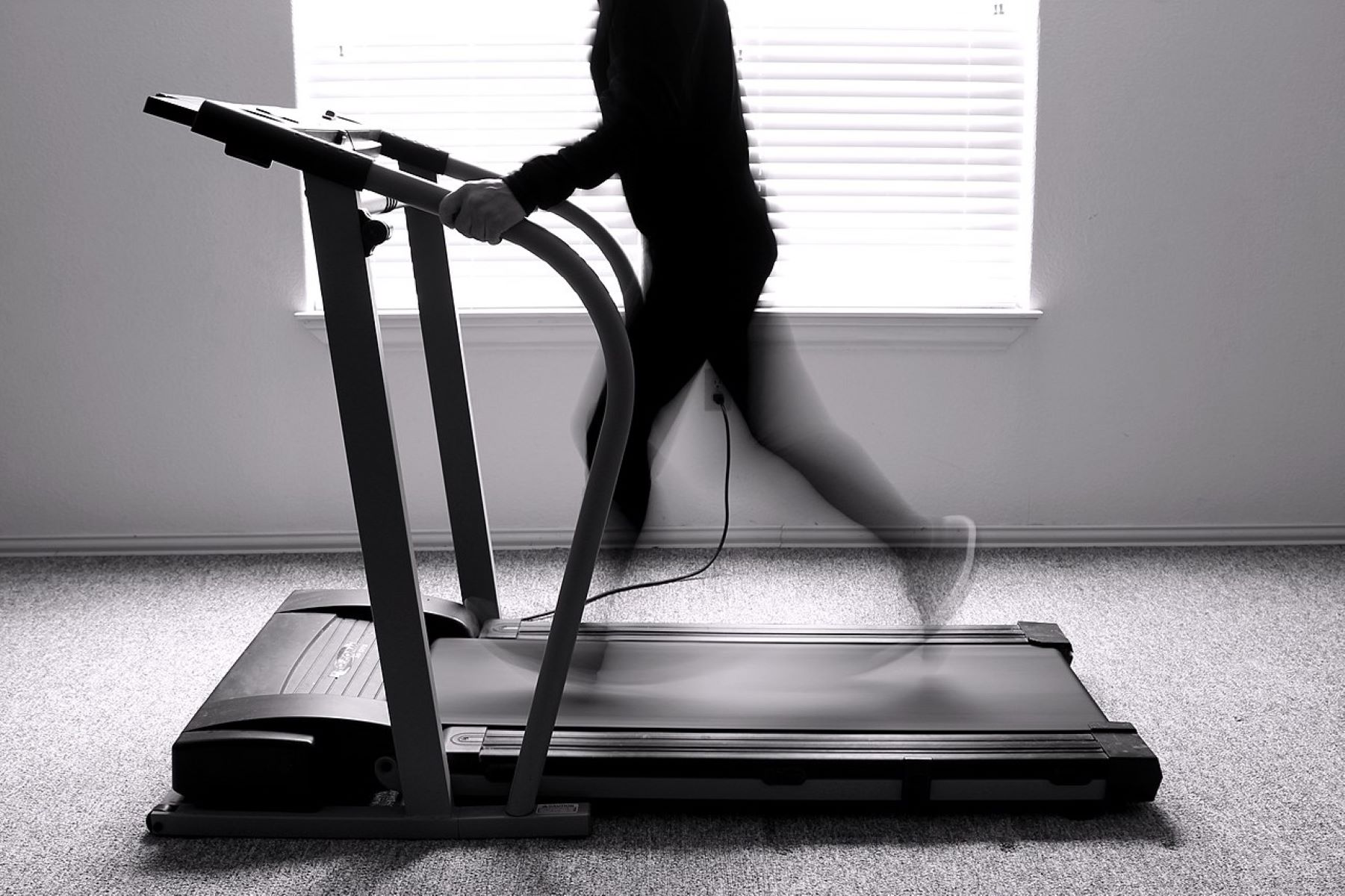

Featured
How Much Exercise Is Too Much A Day
Modified: January 2, 2024
Discover the answer to how much exercise is too much a day with our featured article. Find out the optimal amount for a healthy and balanced fitness routine.
Introduction
Exercise is an essential component of a healthy lifestyle. It helps to maintain a healthy weight, strengthen muscles and bones, improve cardiovascular health, and boost overall mood and mental well-being. However, just like anything else in life, too much of a good thing can be harmful. While exercise is generally beneficial, overdoing it can lead to a variety of health issues.
In our modern society, where the pressure to achieve and excel is ever-present, many individuals fall into the trap of excessive exercise. Whether driven by a desire to achieve a certain physique, keep up with fitness trends, or meet societal expectations, the line between healthy exercise and overexertion can easily become blurred.
It is important to strike a balance between the benefits of exercise and the risks associated with excessive physical activity. In this article, we will explore the potential dangers of overexercising and provide guidelines for finding the right balance to ensure safe and effective fitness routines.
Defining Exercise
Before delving into the topic of excessive exercise, it is important to establish a clear understanding of what exercise actually entails. Essentially, exercise refers to any physical activity that is planned, structured, and repetitive. It involves bodily movement, increases energy expenditure, and aims to improve or maintain physical fitness and overall health.
Exercise can take many different forms, ranging from aerobic activities such as running, swimming, and cycling, to strength training exercises like weightlifting and resistance training. Flexibility exercises such as yoga and Pilates, as well as balance exercises like tai chi, are also important aspects of a well-rounded fitness routine.
Regular exercise offers numerous benefits for both the body and mind. It strengthens muscles, improves cardiovascular health, helps control weight, enhances flexibility, boosts mood, and reduces the risk of chronic diseases such as heart disease, diabetes, and certain types of cancer.
However, the key to reaping these benefits lies in striking the right balance. While some exercise is necessary for good health, pushing the body beyond its limits can have detrimental effects.
It is important to note that when discussing the dangers of excessive exercise, we are referring specifically to individuals who engage in intense physical activity well beyond the recommended guidelines. For the average person, regular exercise within the recommended parameters is essential for maintaining optimal health.
The Benefits of Exercise
Exercise plays a crucial role in improving overall health and well-being. When done in moderation, it offers a wide array of benefits that positively impact both the body and mind.
First and foremost, exercise is an excellent tool for weight management. Regular physical activity helps to burn calories and maintain a healthy body weight. It can also increase metabolism, which aids in weight loss or maintenance.
Exercise is also vital for cardiovascular health. Engaging in aerobic activities such as running, swimming, or cycling strengthens the heart, improves blood circulation, and lowers the risk of heart disease and stroke.
Furthermore, regular exercise aids in building and maintaining strong muscles and bones. Strength training exercises, such as weightlifting or resistance training, help to increase muscle mass, improve bone density, and reduce the risk of osteoporosis.
In addition to its physical benefits, exercise has a profound impact on mental health. Engaging in physical activity releases endorphins, also known as the “feel-good” hormones, which promote a sense of well-being and alleviate feelings of stress, anxiety, and depression.
Exercise also improves cognitive function and brain health. It increases blood flow to the brain, stimulates the growth and development of new brain cells, and enhances memory, concentration, and overall mental clarity.
Moreover, incorporating exercise into daily routine promotes better sleep patterns, leading to improved quality of sleep and increased energy levels during the day.
Overall, exercise is an essential aspect of a healthy lifestyle. It improves physical fitness, helps control weight, reduces the risk of chronic diseases, enhances mental well-being, and contributes to better overall quality of life.
The Risks of Excessive Exercise
While exercise is undoubtedly beneficial for our health, pushing our bodies beyond their limits with excessive exercise can have negative consequences. It is essential to be aware of the risks associated with overexertion and to recognize when our exercise habits become excessive.
One of the primary concerns with excessive exercise is the increased risk of injury. When we engage in intense physical activity without allowing our bodies enough time for rest and recovery, we put ourselves at a higher risk of sprains, strains, stress fractures, and other exercise-related injuries. Overuse injuries, such as tendinitis and bursitis, are also more likely to occur when the body is constantly subjected to excessive repetitive movements.
Mental health can also be negatively affected by excessive exercise. For individuals who fixate on achieving unrealistic fitness goals or have an unhealthy obsession with exercise, exercise can become a source of stress and anxiety rather than a means of stress relief. This can lead to the development of exercise addiction, characterized by compulsive exercise behaviors and an inability to take rest days.
Another risk of excessive exercise is the negative impact on the immune system. Intense and prolonged physical activity can temporarily suppress the immune system, making individuals more susceptible to infections and illnesses. This is especially problematic when combined with inadequate sleep and poor nutrition, which are often associated with excessive exercise habits.
Furthermore, excessive exercise can disrupt hormone levels in the body, particularly in women. Female athletes may experience menstrual irregularities or even the absence of menstruation altogether, a condition known as amenorrhea. This hormonal imbalance can lead to decreased bone density, increased risk of stress fractures, and fertility issues.
Lastly, over-exercising without proper nutrition can result in nutrient deficiencies and energy imbalance. Without consuming enough calories and nutrients to fuel the increased physical activity, individuals may experience weakness, fatigue, decreased performance, and compromised overall health.
It is important to remember that the risks associated with excessive exercise can vary from person to person, and factors such as age, fitness level, and existing health conditions should be taken into consideration when determining what constitutes excessive exercise.
Recognizing Overtraining Syndrome
Overtraining syndrome is a condition that occurs when the body does not receive adequate time to recover from intense physical activity. It is often characterized by a decline in performance, persistent fatigue, and an increased risk of injury.
Recognizing the signs of overtraining syndrome is crucial in order to address the issue promptly and prevent further damage. Some common symptoms of overtraining syndrome include:
- Chronic fatigue and exhaustion that is not relieved by rest
- Decreased athletic performance and endurance
- Increased susceptibility to illness and infections
- Muscle and joint pain or aches
- Insomnia or trouble sleeping
- Irritability, mood swings, and a decrease in motivation
- Elevated heart rate and blood pressure at rest
- Recurrent injuries or difficulty recovering from minor injuries
- Changes in appetite and weight loss or gain
It is important to note that these symptoms can indicate other medical conditions as well, so it is essential to consult a healthcare professional for an accurate diagnosis.
If you suspect that you may be experiencing overtraining syndrome, it is crucial to take steps to address the issue. This includes incorporating rest and recovery days into your exercise routine, ensuring proper nutrition and hydration, and seeking professional help if needed.
Prevention is always better than cure, so it is important to listen to your body and avoid excessive exercise in the first place. Varying your workouts, allowing for rest and recovery between intense sessions, and maintaining a balanced exercise routine are key to preventing overtraining syndrome.
Remember, exercise is meant to enhance your health and well-being, not harm it. By being mindful of your body’s limits and taking the necessary steps to avoid excessive exercise, you can enjoy the benefits of physical activity without risking your overall health and performance.
Health Consequences of Overexercising
Engaging in excessive exercise can have detrimental effects on both physical and mental health. It is important to be aware of the potential consequences of overexercising in order to protect our overall well-being.
One of the primary health consequences of overexercising is an increased risk of cardiovascular issues. Intense and frequent exercise can place excessive strain on the heart, leading to an elevated resting heart rate and an increased risk of cardiac abnormalities. Studies have shown that athletes who engage in extreme levels of endurance exercise may be more prone to developing abnormal heart rhythms or even heart damage.
Overexercising can also lead to hormonal imbalances in the body. Intense exercise without proper rest and nutrition can disrupt the normal functioning of the endocrine system, resulting in a decrease in hormones such as testosterone and estrogen. This can have negative effects on reproductive health, bone density, and overall hormonal balance.
Furthermore, excessive exercise can cause immune system suppression. Intense physical activity places stress on the body, and if not balanced with adequate recovery, it can lead to a weakened immune system. This can make individuals more susceptible to infections, viruses, and illnesses.
Musculoskeletal issues are another common consequence of overexercising. Constantly subjecting the body to high-impact activities without sufficient rest and recovery can lead to overuse injuries such as tendinitis, stress fractures, and joint pain. The excessive wear and tear on the muscles, tendons, and ligaments can result in chronic pain and long-term damage.
Overexercising can also have negative psychological effects. Those who engage in compulsive or obsessive exercise behaviors may experience feelings of guilt or anxiety if they miss a workout. They may also develop an unhealthy relationship with food, leading to disordered eating patterns or eating disorders.
Additionally, overexercising can contribute to the development of mental health issues such as depression and anxiety. Pushing the body to extreme limits without adequate rest can disrupt the balance of neurotransmitters in the brain, leading to mood disturbances and increased risk of mental health disorders.
It is important to prioritize rest, recovery, and self-care in order to mitigate the potential health consequences of overexercising. Listening to your body, seeking professional guidance, and finding a healthy balance between exercise and rest are essential for safeguarding your overall well-being.
Finding the Right Balance
Finding the right balance in our exercise routine is crucial for maintaining optimal health and preventing the negative consequences of overexercising. It is important to strike a balance between challenging our bodies and allowing them enough time to rest and recover.
Here are a few tips to help you find the right balance in your exercise routine:
- Set realistic goals: Set achievable goals that align with your current fitness level and lifestyle. Avoid comparing yourself to others and focus on your own progress and well-being.
- Listen to your body: Pay attention to any signals or signs of fatigue, pain, or exhaustion. It’s important to differentiate between normal muscle soreness and more serious signs of overexertion.
- Vary your workouts: Incorporate a variety of exercises into your routine to work different muscle groups and prevent overuse injuries. This can include strength training, cardiovascular exercises, flexibility training, and recreational activities.
- Rest and recovery: Allow your body enough time to recover between workouts. Rest days are just as important as the exercise itself. It’s during rest that your body repairs and strengthens muscles.
- Listen to your mind: Mental health is as important as physical health. If you find yourself dreading workouts or feeling excessively stressed or anxious about exercise, take a step back and evaluate your routine.
- Seek professional guidance: If you’re unsure about your exercise routine or any symptoms you may be experiencing, consult with a healthcare professional or a certified personal trainer who can provide guidance tailored to your specific needs.
- Maintain a balanced lifestyle: Exercise is only one aspect of a healthy lifestyle. Remember to prioritize sleep, nutrition, stress management, and social connections. It’s the combination of these factors that contributes to overall well-being.
By finding the right balance, you can enjoy the benefits of exercise without risking your health. Remember that everyone’s needs and capabilities are different, so it’s essential to find what works best for you and your body.
Guidelines for Safe and Effective Exercise
When it comes to exercise, following guidelines for safe and effective practices is crucial for maintaining your health and achieving your fitness goals. Here are some key principles to keep in mind:
- Start slow and gradually increase intensity: If you are new to exercise or returning after a long break, it is important to start with low-impact activities and gradually increase the intensity and duration over time. This allows your body to adapt and reduces the risk of injury.
- Warm up and cool down: Always begin your workout sessions with a proper warm-up to increase blood flow to the muscles and prepare them for more intense activity. Similarly, cool down with stretches and gentle movements to gradually bring your heart rate back to normal and prevent muscle soreness.
- Include a variety of exercises: Incorporate a combination of aerobic exercises, strength training, and flexibility exercises into your routine. This ensures that you are targeting different muscle groups, improving cardiovascular fitness, and maintaining a balanced physique.
- Listen to your body: Pay attention to any pain or discomfort during exercise. It is important to distinguish between normal fatigue and potential signs of injury. If something feels off, take a break or modify the exercise as needed.
- Hydrate and fuel your body: Drink water before, during, and after exercise to stay hydrated. Additionally, fuel your body with a balanced diet rich in fruits, vegetables, lean proteins, and whole grains to provide the necessary energy and nutrients for optimal performance and recovery.
- Get enough rest and recovery: Make sure to include rest days in your exercise schedule to allow your body time to repair and rebuild. Adequate sleep is also crucial for muscle recovery and overall well-being.
- Progress gradually: Over time, gradually increase the intensity, duration, and frequency of your workouts. This progressive overload allows your body to continually adapt and become stronger without pushing it to the point of overexertion.
- Seek professional guidance: If you are new to exercise or have specific fitness goals, consider working with a certified personal trainer or exercise professional. They can provide personalized guidance, tailor workouts to your needs, and ensure proper form and technique.
Remember that everyone’s fitness journey is unique, and what works for one person may not work for another. It is important to find a routine that aligns with your goals, preferences, and individual capabilities. By adhering to these guidelines, you can maintain a safe and effective exercise routine that supports your physical and mental well-being.
Conclusion
In conclusion, exercise is a vital component of a healthy lifestyle, offering numerous benefits for both the body and mind. However, it is equally important to recognize the potential risks and consequences of overexercising. Striking the right balance between challenging our bodies and allowing them sufficient rest and recovery is essential for maintaining optimal health.
We explored the various benefits of exercise, including weight management, cardiovascular health, muscle and bone strength, improved mood, and mental well-being. However, when exercise becomes excessive, it can lead to a range of health problems.
Overexercising can result in increased risk of injury, hormonal imbalances, immune system suppression, musculoskeletal issues, and negative psychological effects. Recognizing the signs of overtraining syndrome, such as chronic fatigue, decreased performance, and recurring injuries, is crucial in order to address the issue and prevent further damage.
By finding the right balance in our exercise routine, incorporating rest and recovery, listening to our bodies, and seeking professional guidance when needed, we can enjoy all the benefits of exercise while mitigating the risks. It is important to set realistic goals, vary our workouts, prioritize our mental health, and maintain a balanced lifestyle encompassing proper nutrition, hydration, and adequate sleep.
Exercise should be a source of joy, positively impacting our physical and mental well-being. By following the guidelines for safe and effective exercise, we can ensure that it remains a sustainable and enjoyable part of our lives. Remember, your health and well-being should always be the priority, and finding the right balance is key to achieving long-term fitness success.









